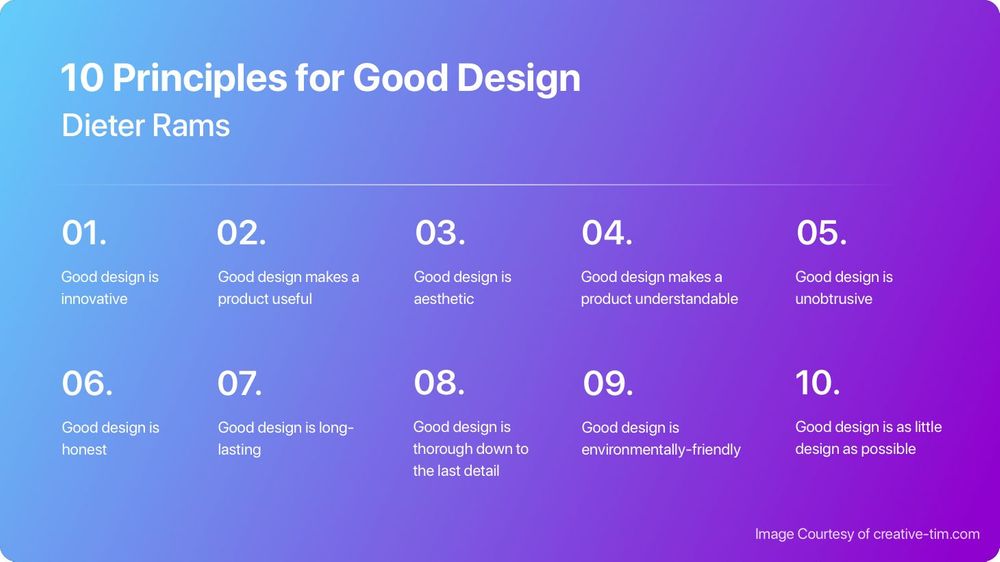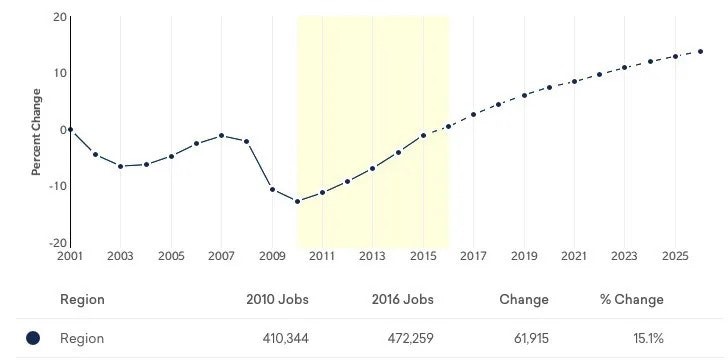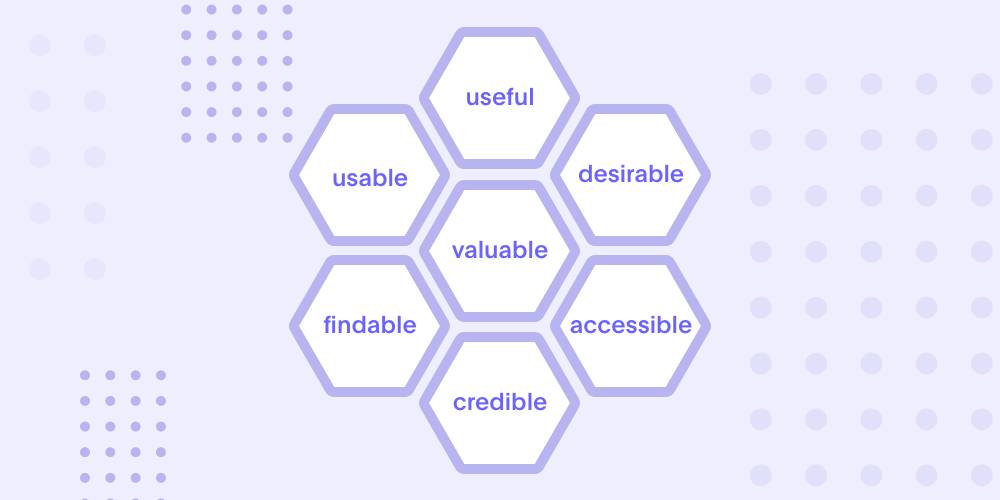Introduction
Have you ever been on a website where you either don’t understand what they’re selling or can’t manage to navigate the page? You probably shut the window and try a different one. This is most likely due to the website’s lack of a good User Experience Design. Or Have you ever wondered what makes you hooked on a website for hours without you even realizing it? Then What exactly makes these websites stand out? A better User Experience Design is the answer to your question.
People today expect a simple, efficient, and quick user experience. As a result, an excellent website user interface and design are required to sustain consumer happiness.
This guide will help you explain what User Experience Design is all about and get started on the UX journey.
This blog post contains the following information:
What is User Experience Design?
Why is User Experience Design important?
What does a UX Designer do?
- User Research
- User personas
- Design
- Information Architecture
- User testing
Factors that Influence UX
- Useful
- Usable
- Findable
- Credible
- Desirable
- Accessible
- Valuable
What is a good User Experience Design?
What is the difference between UI and UX?
Where to start learning User Experience Design?
What Is User Experience Design?
User experience design is an idea with multiple dimensions that encompasses a variety of disciplines such as interaction design, usability, visual design, and information architecture.
User Experience Design is a design approach that considers all product or service elements with the user. This involves not just the beauty and function as in usability and accessibility of a product, but also the thrill and emotion—stuff that is more difficult to create and execute. User Experience is an often-misunderstood field. To be competitive, UX experts must communicate with decision-makers in today’s business world.
User experience from the customer’s perspective is how a person feels while engaging with a system. The system might be a web application, website, desktop software, or some human-computer interaction in current circumstances.

Source: Course Report
Why Is User Experience Design Important?
UX seeks to meet the user’s requirements and creates better customer satisfaction and customer retention to provide great experiences that keep the user loyal to the product or brand. It is not always necessary for a product to be creative. It just portrays the same notion in a new way. The product stands out due to its user-centered design. Establishes a two-way link between the maker and the user by defining customer journeys on your product.
UX decreases development/bug fixing/marketing expenses while simultaneously improving return on investment (ROI). UX provides an intuitive experience, Platform Specifics, Coherence, and Continuity.
- A better user interface may increase your website’s conversion rate by 200%, conversion rates can increase by up to 400% with a more robust UX design.
- Every dollar invested in UX nets an ROI of 9,900%.
- 70% of online businesses failed due to bad usability.
- According to UX statistics, 88 percent of online customers said they would not return to a website after experiencing a negative user experience.
- Rather than advertisements, 70% of consumers learn about a brand via the brand’s blog.
- If a website isn’t mobile-friendly, 50 % of consumers will quit it, even if they like the company.
- 54% of users tend to turn away due to Ad clutter.

Source: FreeCodeCamp
What Does A UX Designer Do?

Image: ramotion.com
The market sees an increase in the need for UI/UX designers. With more and more firms realizing the significance of design, various opportunities are available in established organizations and new ventures. This provides novice designers something to look forward to, knowing that they won’t be lost after learning everything they can about design.
Your job as a user experience designer is to make things and technology more useable, pleasant, and accessible to humans. UX designers operate as part of a larger product team, frequently bridging the gap between the user, the developers, and essential business stakeholders.
It is your first and foremost responsibility as a UX designer to advocate for the end-user or consumer. Whether creating a new product, developing a new feature, or adjusting to a current product or service, the UX designer must evaluate what is best and the overall user experience. Simultaneously you are in charge of ensuring that the product or service fits the company’s demands. Is it in line with the CEO’s vision? Will it assist in increasing revenue or retaining loyal customers?
Considering their wide range, it’s not surprising that UX Designers do a wide variety of tasks, depending on the firm and project. Moreover, according to one poll, there are over 200 different job titles in UX design, not to mention a vast range of responsibilities.
User Research
Most people are unaware of the amount of research into UX design. In reality, market, product, and user research are essential components of UX design since research is critical to understanding the user and their specific demands. User research frequently focuses on a customer’s behavior, motives, and needs to assist the Designer in determining what opportunities are available in a particular market for product solutions.
Data collecting, surveys, user interviews, and focus groups are some of the research methodologies often used by UX Designers to gain information and insights about target consumers.
User Personas
Another critical stage of the UX design process is the creation of user personas. UX Designers aggregate and analyze their results at this stage to create representative personas based on trends and similarities discovered in their study. Each persona provides a possible user’s demographic information, motives, potential responses, requirements, and anything else Developers should consider—a great tool that helps the company develop a better understanding of who they’re designing the product for.
Design
UX designer makes a rough draft of an idea at this phase. Typically, UX designers focus on wireframes. Wireframing is the technique of arranging logos, menus, and buttons on high-trafficked pages. In this stage, actual images are kept to a minimum. It’s more about designating a location for later phases and establishing a layout that highlights and draws more attention to the most critical information.
In contrast to wireframes, prototypes are a higher-fidelity product design that may be used for user testing and showing the product to the development team. These prototypes are created to provide a look, feel, and range of features that are very much close to the predicted final product. Clickable prototypes enable test users to interact with the product, allowing UX Designers to experiment with different scenarios and find areas for improvement.
Information Architecture
Following that, you’ll consider the type of material required and how it will be organized across the website or app. Information architecture is working out the most logical arrangement and organization of the material. A good information architecture ensures that users can locate what they’re searching for and navigate from one page to the next without thinking too hard.
User Testing
UX Designers may test goods in a variety of ways. One of the most popular is user testing, which entails letting consumers engage with a final design prototype to evaluate its usability, intuitiveness, and accessibility. There are, however, various techniques; focus groups, moderated user testing, and unmoderated user tests all give essential feedback on what is and isn’t functioning. Finally, product testing is one of the last and most essential processes in determining what modifications should occur as development progresses.
Factors That Influence UX

Image: semanticstudios.com
According to Peter Morville, a pioneer in the UX field, seven aspects influence user experience. Peter believed that this new diagram would assist in educating clients because there are many elements of this field that go beyond usability. The honeycomb assists in locating the sweet spot between the many aspects of a good user experience.
Useful
A company’s product or service must be valuable and meet a need. There is no real purpose for a product or service if it is not helpful or meets the wants or requirements of the user.
Keep in mind that usefulness is really in the eye of the beholder. It all boils down to your target market. A video game feature (such as character customization choices) may not appear beneficial to everyone. Still, it may be the determining factor in whether or not they play a game to a player.
Usable
The system via which the product or service is supplied must be basic and straightforward to use. Designs should be constructed in a friendly and easy-to-understand manner.
Everything from the server to the HTML to the aesthetic aspects of a website or app should be user-friendly. Usability testing tools such as Usabilla Webpage FX. can assist you in checking usability.
Moreover, websites and applications should be simple enough for users to become experts in using them after just one visit. This should evolve with each release, so if you add a new feature or make a considerable redesign, there’d be some tutorials to make the user familiar while starting.
Findable
The information must be easily accessible and navigable. If a user has an issue, they should discover a solution promptly. The navigation structure should also be built up logically. If you can’t locate a thing, you’re not going to buy it, and the same is true for all potential users.
Suppose you opened up a newspaper and all the stories within it were given page space at random, rather than being grouped into sections such as Sport, Entertainment, Business, and so on. In that case, you’d probably find reading it quite annoying. Many items’ usability is dependent on their ability to be found.
Credible
Credibility refers to the user’s willingness to put their trust in the product you’ve delivered. Not only does it accomplish the job that it is designed to do, but it also lasts a respectable period, and the information that comes with it is accurate.
Development teams are in charge of providing a product that lives up to its promises. Companies such as Spotify and Netflix, for example, offer a smooth streaming experience. In a highly competitive market, any persistent failures on their side will result in customers quitting the service and going to another provider.
Desirable
The product, service, or system’s visual aesthetics must be appealing and straightforward to translate. The design should be concise and to the point. This component may appear to be entirely about branding. Branding, on the other hand, does not seem out of anywhere.
Apple isn’t successful just because its goods are visually appealing; however, it is a distinct advantage. They back it up with high-quality products. Spotify and Netflix are generally equivalent to other streaming services. Still, because they were the first to market and had the resources to spend on innovation, they are regarded as the cream of the crop.
Accessible
The product or service should be developed so that users with disabilities may enjoy the same user experience as everyone else. People of all abilities should use your product or service. There is a wealth of information available regarding accessibility. Begin with a11y and ensure that you are continually auditing for accessibility. If anything doesn’t seem right, don’t be scared to bring it up.
Even if your bosses aren’t sympathetic to the moral argument that everyone should have access to the internet, there’s a strong commercial case to be made here. Disabled persons and their families in the United Kingdom alone have projected £212 billion.
Valuable
Finally, the product must be valuable. It must provide value to both the company that generates it and the person who buys or utilizes it. Any early success of a product is likely to be damaged if it lacks value.
Your product or service must be valuable to both the business and the client. This, like other areas of UX, is determined by your users. Some user groups will place higher importance on attractiveness than accessibility, and vice versa. It is your responsibility to balance consumer and corporate needs, but we should constantly question actions prioritizing profit above a smooth experience.
What Is A Good User Experience Design?
Everyone’s user experience is different. The most significant thing to remember while developing a product is that even if you set it, you may not be a possible user who will utilize it. As a result, we cannot presume what a user wants or requires.
Let’s look at some good User Experience examples.
PayPal
Prior to the release of their redesigned website in 2014, PayPal’s website was highly complicated. Since then, PayPal has streamlined its website and mobile app experience. There are several of John Maeda’s Laws of Simplicity at work: reducing, organizing, placing, generating context, adding meaning, and saving time.
MailChimp
MailChimp provides their online application a face, but not human. Their mascot, a chimp named Frederick von Chimpenheimer IV (or Freddie for short), appears throughout their interface, providing users with humor, high fives, and an emotional connection. This humanization of technology gives dimension to what would otherwise be a sterile and, frankly, boring experience of managing your email marketing.
What Is The Difference Between UI And UX?
The distinction between User Interface (UI) and User Experience (UX) is that UI refers to the visual components people interact with a product. In contrast, UX is concerned with the user’s experience with a product or service. So, UI is concerned with visual interface components like fonts, colors, menu bars, and so on, but UX is concerned with the user and their experience through the product.
The UX designer considers the user’s entire path to address a specific problem; what stages do they take? What duties must they complete? How simple or complicated is the experience?
Much of their work involves determining what sorts of problems and pain points people have and how a particular product may address them. They will perform comprehensive user research to determine the target consumers and their specific product demands. They’ll then map out the user’s path across a product, considering factors such as information architecture (how the material is arranged and labeled throughout a product) and what sorts of features the customer would want. Eventually, they’ll produce wireframes, which are the bare-bones plans for the website.
With the product’s skeleton in place, the UI designer steps in to liven it up. The UI designer considers all visual parts of the user’s journey, including all individual screens and touchpoints that the user may experience, for example, hitting a button, scrolling down a page, or swiping through an image gallery.
While the UX designer creates the experience, the UI designer concentrates on making the journey feasible. That is not to suggest that UI design is just concerned with aesthetics; UI designers significantly affect whether or not a product is accessible and inclusive.
Where To Start Learning User Experience Design?
So, you’ve done your research, and you’re well-versed in UX design. You understand how UX designers operate and have experimented with some of the industry’s most popular tools. We’ll presume at this point that you’ve liked the journey so far and want to continue.
If you’re passionate about a career in UX design, the best way to get from beginner to expert is to take a structured course. Let us state unequivocally before you start running away: you do not need to attend university or spend years studying. Employers, in reality, aren’t searching for a long list of credentials; they want to see that you’ve mastered the main ideas and practical abilities.
You may concentrate on improving your “designer’s eye” in addition to learning fundamental UX design ideas and approaches. Surround yourself with sources of inspiration. You’ll need motivation throughout your UX career, not just at the outset. Checking up on industry trends, observing other designers on social media, and exploring the internet for new ideas helps keep your creative juices flowing and your design horizons constantly broadened. Employers want to see what you’re capable of; therefore, a CV isn’t enough. Create a portfolio of your work.
Conclusion
It’s easy to see why User Experience Design is so important when you look at the bigger picture. It is the cause for a company’s success or failure. It is the way your website communicates with your audience and how your audience learns about your company. It is the one area of your functioning that you should never undervalue or skimp on. UX design is a diverse discipline that encompasses everything from creativity to research. It is a discipline that is always growing and will continue to do so in the future.
So if you are looking for a responsive and adaptive user experience design for your business or project, Mpire Solutions has both professional expertise and proven deliveries. Connect with us for a FREE Consultation.
 HubSpot Consulting Needs
HubSpot Consulting Needs  Custom Automation Plan
Custom Automation Plan 









